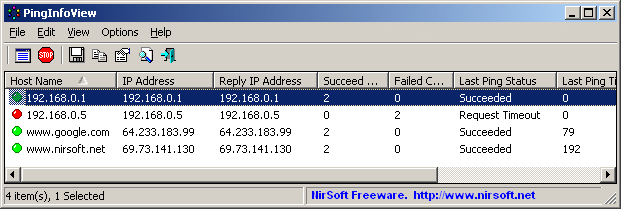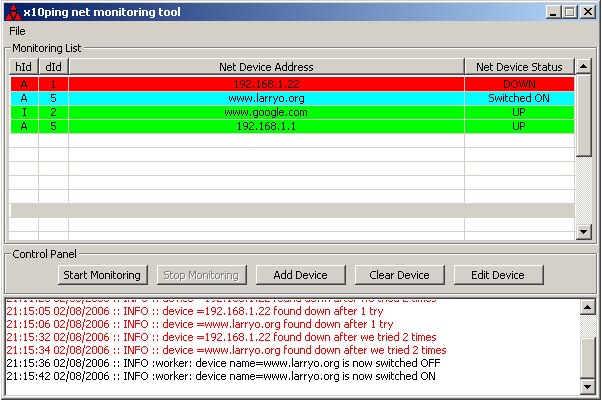

Green – this means that the latency of the web address you are pinging from this location is excellent and you don’t need to worry.Ģ.
#Ping tool for windows how to#
Here is a quick guide on how to interpret the results from the ping checker.ġ. Reading the results from the Ping IP tool If the connections are good and the target domain/server is up, a good return packet will be received. The device that sent the packet then waits and listens for a return packet. This packet contains 64 bytes – 56 data bytes and 8 bytes of protocol reader information. A small packet will be sent through the network to a given IP address (IPv4) or host name. This Ping tool uses the Internet Control Message Protocol (ICMP) Echo function as detailed in RFC 792. It usually takes less than 10 seconds for the ping test to finish and we will display results in a table with the ping server country, city, sent and received packets, the minimum, maximum and average ping from the location. Map of the server locations from where we will ping the network: The ping utility will help you determine if a server/domain is working and the network is accessible. psping -b -l 8k -n 10000 -h 100 192.168.2.Enter an IP address or a URL in the input box and we will ping it from more than 10 web servers worldwide. Simply add -u to have PsPing perform a UDPīandwidth test.
/icmp-ping-5e5d3a24ff584d289d918cbb7c306d51.png)
Note that the test must run for at least one second after warmup for a IP address for 10 seconds and produces a histogram with 100 buckets. This command tests bandwidth to a PsPing server listening at the target Server, printing a histogram with 100 buckets when completed: psping -l 8k -n 10000 -h 100 192.168.2.2:5000 Measures the round trip latency of sending an 8KB packet to the target The -s option and the source address and port the server will bind to: psping -s 192.168.2.2:5000Ī buffer size is required to perform a TCP latency test. To configure a server for latency and bandwidth tests, simply specify Possible, only printing a summary when finished with the 100 iterationsĪnd 1 warmup iteration: psping -n 100 -i 0 -q marklap:80 The followingĬommand executes connect attempts against the target as quickly as To execute a TCP connect test, specify the port number. This command executes an ICMP ping test for 10 iterations with 3 warmup Warmup for the specified iterations (default is 2x CPU cores). Number of outstanding I/Os (default is min of 16 and 2x CPU cores). The server can serve both latency and bandwidth tests and remains activeĬlient: psping |] ] ] Warmup with the specified number of iterations (default is 5). Receive from the server instead of sending. Open source firewall port during the run. TCP ping usage: psping |] ] Ĭlient: psping |] ] ] Warmup with the specified number of iterations (default is 1).įor high-speed ping tests use -q and -i 0. Ping until stopped with Ctrl+C and type Ctrl+Break for statistics. Number of pings or append 's' to specify seconds e.g. Append 'k' for kilobytes and 'm' for megabytes. Specify a comma-separated list of times to create a custom histogram (e.g.

If you specify a single argument, it's interpreted as a bucket count and the histogram will contain that number of buckets covering the entire time range of values. Print histogram (default bucket count is 20).

Use the following command-line options to show the usageĬopy PsPing onto your executable path. PsPing implements Ping functionality, TCP ping, latency and bandwidth


 0 kommentar(er)
0 kommentar(er)
